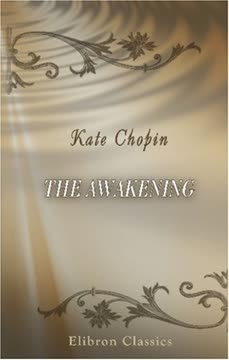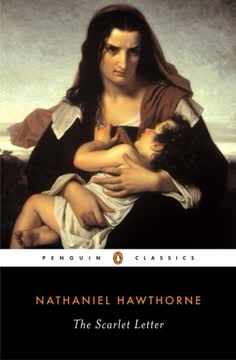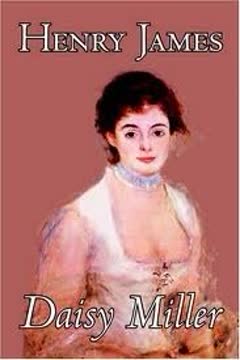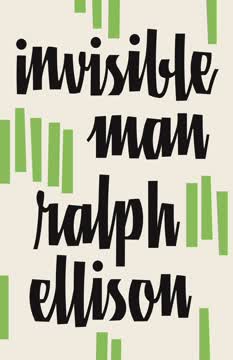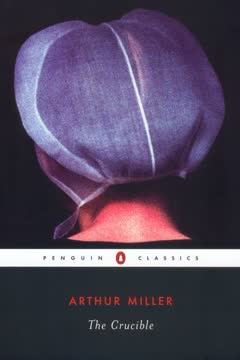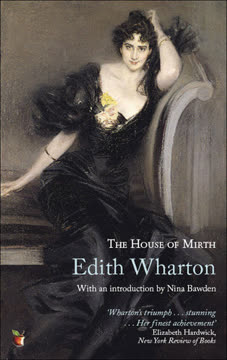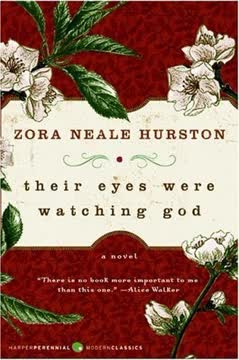Plot Summary
Caged Bird's Cry
Edna Pontellier, vacationing at Grand Isle, feels trapped in her role as a wife and mother. Her husband, Léonce, is absorbed in his business, leaving Edna to explore her own desires. The parrot's cry, "Allez vous-en!" symbolizes her yearning for freedom. She forms a close bond with Robert Lebrun, a charming young man, which awakens her to the possibility of a life beyond societal expectations.
Edna's Awakening
As Edna spends more time with Robert, she begins to question her life choices. She realizes she has been living according to others' expectations, not her own desires. Her friendship with the artistic and independent Mademoiselle Reisz further fuels her awakening. Edna starts to embrace her individuality, distancing herself from her husband and children, and pursuing her passion for painting.
A New Independence
Edna moves into a smaller house, the "pigeon house," symbolizing her break from traditional roles. She rejects her husband's control and societal norms, seeking independence. Her relationship with Alcee Arobin, a notorious womanizer, becomes more intimate, highlighting her rebellion against conventional morality. Despite her newfound freedom, Edna struggles with loneliness and the consequences of her choices.
The Sea's Seduction
The sea becomes a symbol of Edna's longing for freedom and escape. She learns to swim, experiencing a sense of empowerment and liberation. The ocean's seductive call represents her desire to break free from societal constraints. However, this newfound independence also brings isolation, as she drifts further from her family and friends.
Robert's Departure
Robert, aware of the impossibility of their relationship, leaves for Mexico, leaving Edna heartbroken. His departure forces her to confront her feelings and the reality of her situation. Despite her love for Robert, Edna realizes she cannot rely on him for her happiness. She must find fulfillment within herself, even as she grapples with the pain of his absence.
Arobin's Influence
Alcee Arobin becomes a significant figure in Edna's life, offering companionship and passion. Their relationship is physical rather than emotional, highlighting Edna's struggle to find genuine connection. Arobin's presence complicates her journey toward self-discovery, as she navigates the tension between desire and societal expectations. Edna's interactions with Arobin reveal her inner conflict and the complexity of her awakening.
Final Embrace
Overwhelmed by the constraints of her life and the impossibility of true freedom, Edna returns to Grand Isle. She walks into the sea, embracing the water's seductive call. In this final act, Edna seeks liberation from societal expectations and personal turmoil. Her choice reflects both a tragic surrender and a profound assertion of autonomy, as she finds peace in the sea's eternal embrace.
Characters
Edna Pontellier
Edna is a complex character, torn between societal expectations and her desire for independence. Her journey of self-discovery leads her to question her roles as a wife and mother. She seeks autonomy through art and relationships, ultimately finding solace in the sea. Edna's struggle highlights the conflict between individual desires and societal norms.
Léonce Pontellier
Léonce is Edna's husband, a successful businessman who values social conventions. He is often oblivious to Edna's inner turmoil and desires, viewing her as a possession rather than an individual. His focus on appearances and financial success contrasts with Edna's quest for personal fulfillment, underscoring the societal pressures she faces.
Robert Lebrun
Robert is a charming young man who awakens Edna's desires and serves as a catalyst for her transformation. His departure to Mexico forces Edna to confront her feelings and the reality of her situation. Robert represents both the possibility of love and the limitations imposed by societal norms, as he ultimately cannot offer Edna the freedom she seeks.
Mademoiselle Reisz
Mademoiselle Reisz is an independent and unconventional pianist who inspires Edna's awakening. Her artistic passion and disregard for societal expectations serve as a model for Edna's own journey. Mademoiselle Reisz's influence highlights the importance of self-expression and individuality in Edna's quest for autonomy.
Alcee Arobin
Alcee is a notorious womanizer who becomes involved with Edna. Their relationship is physical rather than emotional, complicating Edna's journey toward self-discovery. Arobin's presence highlights Edna's struggle to balance desire and societal expectations, as she navigates the complexities of her awakening.
Adele Ratignolle
Adele is Edna's friend and a devoted wife and mother, representing the ideal of traditional femininity. Her life contrasts sharply with Edna's desires for independence, serving as a reminder of societal expectations. Adele's friendship and concern for Edna underscore the tension between personal fulfillment and societal roles.
Plot Devices
Symbolism of the Sea
The sea is a central symbol in the novel, representing Edna's longing for freedom and escape from societal constraints. It embodies the seductive call of independence and the possibility of self-discovery. The sea's presence throughout the novel underscores Edna's internal struggle and ultimate liberation.
Use of Foreshadowing
Foreshadowing is used to hint at Edna's ultimate fate, particularly through her interactions with the sea. Her growing comfort in the water and the recurring imagery of the ocean suggest her eventual choice to embrace the sea as a means of liberation. This narrative device builds tension and highlights the inevitability of Edna's journey.
Contrast Between Characters
The contrast between characters, such as Edna and Adele, underscores the societal expectations placed on women. Adele embodies traditional femininity, while Edna seeks independence and self-expression. This contrast highlights the tension between personal desires and societal norms, driving Edna's internal conflict and ultimate choices.
Analysis
"The Awakening" is a profound exploration of female autonomy and the struggle for self-discovery within a restrictive society. Edna's journey highlights the conflict between individual desires and societal expectations, as she seeks freedom through art, relationships, and ultimately, the sea. The novel challenges traditional gender roles and underscores the importance of self-expression and individuality. Edna's tragic end reflects both the limitations imposed by society and the complexity of personal liberation. Chopin's work remains a powerful commentary on the constraints faced by women and the enduring quest for autonomy and fulfillment.
Last updated:
FAQ
Synopsis & Basic Details
What is The Awakening about?
- Woman's Quest for Self: The Awakening follows Edna Pontellier, a young wife and mother vacationing at Grand Isle, as she undergoes a profound personal transformation, questioning her societal roles and discovering her individual desires and artistic aspirations. This journey of self-discovery leads her to challenge the restrictive conventions of late 19th-century Creole society.
- Forbidden Love & Art: Central to her awakening is her burgeoning emotional and sensual connection with Robert Lebrun, a charming young man, and her artistic inspiration drawn from the unconventional pianist Mademoiselle Reisz. These relationships act as catalysts, pushing Edna to seek autonomy and express her burgeoning individuality.
- Struggle for Independence: Edna's pursuit of independence culminates in her moving into a small "pigeon-house" and engaging in an affair with Alcee Arobin, symbolizing her rejection of her husband's control and traditional morality. The narrative explores the exhilarating yet isolating consequences of her choices as she grapples with the tension between personal freedom and societal expectations.
Why should I read The Awakening?
- Pioneering Feminist Literature: Readers should engage with The Awakening for its groundbreaking exploration of female desire, autonomy, and the societal constraints placed upon women in the late 19th century. Kate Chopin's unflinching portrayal of Edna's internal life was revolutionary and remains deeply resonant today.
- Rich Symbolism & Psychological Depth: The novel offers a masterclass in literary symbolism, particularly through the recurring motif of the sea, birds, and clothing, which enrich Edna's psychological journey. It delves into the complexities of human emotion, making Edna's struggles for self-realization both poignant and universally relatable.
- Timeless Themes of Freedom: Beyond its historical context, the book grapples with timeless questions about individual freedom, the nature of marriage, motherhood, and the pursuit of an authentic self. It invites readers to reflect on the costs and rewards of defying convention, making it a powerful and thought-provoking read.
What is the background of The Awakening?
- Late 19th-Century Creole Society: The novel is set in the restrictive, patriarchal society of late 19th-century New Orleans and the summer resort of Grand Isle, specifically within the French Creole community. This cultural backdrop, with its emphasis on les convenances (social proprieties) and the "mother-woman" ideal, provides the rigid framework against which Edna's rebellion unfolds.
- Chopin's Personal & Literary Context: Kate Chopin, herself a Southern woman who experienced widowhood and managed her own affairs, drew on her observations of society and her own progressive views. The novel's controversial reception upon its publication in 1899 led to it being banned from libraries and effectively ended Chopin's career, highlighting its challenge to contemporary norms.
- Naturalism and Realism Influences: The Awakening is often categorized within American literary naturalism and realism, characterized by its detailed depiction of social environments and psychological states, and its exploration of how biological and environmental forces shape human destiny. This approach lends a stark, unromanticized quality to Edna's struggle.
What are the most memorable quotes in The Awakening?
- "The voice of the sea is seductive...": This quote, appearing multiple times (e.g., Chapter VI, Chapter XXXIX), encapsulates the sea's powerful symbolic role as a siren call to Edna's soul, representing freedom, sensuality, and the vast, untamed aspects of her inner self. It foreshadows her ultimate surrender to its embrace.
- "I would give up the unessential; I would give my money, I would give my life for my children; but I wouldn't give myself.": Spoken by Edna to Adele Ratignolle in Chapter XVI, this declaration is a pivotal articulation of her burgeoning self-awareness and her refusal to completely efface her individuality for her children, challenging the era's "mother-woman" ideal.
- "The bird that would soar above the level plain of tradition and prejudice must have strong wings.": Mademoiselle Reisz's metaphorical advice to Edna in Chapter XXVII highlights the immense courage and strength required for an artist, or any individual, to defy societal expectations and pursue an authentic life, directly addressing Edna's artistic and personal aspirations.
What writing style, narrative choices, and literary techniques does Kate Chopin use?
- Lyrical and Evocative Prose: Chopin employs a rich, descriptive prose style that often borders on the poetic, particularly when describing nature, Edna's internal states, or moments of sensory experience. This lyrical quality imbues the narrative with a dreamlike, almost mythical atmosphere, enhancing the emotional impact of Edna's journey.
- Third-Person Limited Omniscience: The narrative primarily uses a third-person limited omniscient point of view, focusing on Edna's thoughts and feelings, but occasionally shifts to offer glimpses into other characters' perspectives (e.g., Léonce, Doctor Mandelet). This allows for deep psychological insight into Edna while also providing critical external commentary on her actions and the societal context.
- Symbolism and Motif Repetition: Chopin masterfully weaves a complex web of symbols and recurring motifs—such as birds (caged, soaring), the sea, music, clothing, and light/darkness—to deepen thematic meaning and foreshadow events. These elements are not merely decorative but are integral to understanding Edna's internal conflicts and her evolving sense of self.
Hidden Details & Subtle Connections
What are some minor details that add significant meaning in The Awakening?
- The Parrot's Opening Cry: The parrot's repeated "Allez vous-en! Sapristi! That's all right!" in Chapter I, initially dismissed as mere noise, subtly introduces themes of confinement ("caged"), defiance ("Sapristi!"), and a superficial acceptance of one's lot ("That's all right!"). It foreshadows Edna's own internal struggle to break free from her "cage" of domesticity and societal expectations.
- Edna's Childhood Fantasies: Edna's recollections of infatuations with a cavalry officer, a young gentleman, and a tragedian (Chapter VII) are not just youthful crushes but reveal a lifelong yearning for intense, romantic passion and an escape from the mundane. These "dreams" contrast sharply with her "accidental" marriage to Léonce, highlighting her inherent romantic nature and the unfulfilled desires that predate her awakening.
- The "Pigeon-House" Name: While explicitly stated as small and independent, the "pigeon-house" (Chapter XXIX) also carries a subtle implication of being a temporary, perhaps even precarious, dwelling. Pigeons are often seen as common, easily displaced, and not truly wild, hinting at the limitations of Edna's perceived freedom and the societal judgment that still hovers over her unconventional choices.
What are some subtle foreshadowing and callbacks in The Awakening?
- Edna's Early Swimming Attempts: Her initial "ungovernable dread" in the water (Chapter X), contrasted with her sudden ability to swim "far out, where no woman had swum before," subtly foreshadows her eventual, fatal swim. The sea, initially a source of fear, becomes a symbol of her ultimate, albeit tragic, liberation, echoing her desire to transcend boundaries.
- The Lady in Black's Constant Presence: This minor character, often seen praying or following the young lovers (e.g., Chapter I, VIII, XII), serves as a constant, somber counterpoint to Edna's burgeoning sensuality and rebellion. Her "jaded" appearance and religious devotion subtly foreshadow the potential social and spiritual consequences of straying from conventional paths, acting as a silent warning.
- Robert's Embroidered Tobacco Pouch: In Chapter XXXIV, Robert's new, embroidered silk tobacco pouch, a gift from a "Vera Cruz girl," is a subtle but potent callback to his earlier, more casual rubber pouch. It signifies his entanglement with other women and his capacity for superficial attachments, directly undermining Edna's idealized vision of his unwavering devotion and fueling her jealousy.
What are some unexpected character connections in The Awakening?
- Doctor Mandelet's Intuitive Understanding: While Léonce consults Doctor Mandelet about Edna's "peculiar" behavior (Chapter XXII), the doctor's internal monologue reveals a deeper, more intuitive understanding of Edna's unspoken desires and the societal pressures on women. His unasked question, "Is there any man in the case?" and his later musings about "the waning of a woman's love" show a profound, if unacted upon, empathy that Léonce entirely lacks.
- Victor Lebrun's Unacknowledged Role: Victor, often portrayed as a boisterous, somewhat crude character, unexpectedly serves as a conduit for information and emotional triggers for Edna. His singing of "Ah! si tu savais" (Chapter XXX) deeply affects Edna, recalling Robert, and his exaggerated descriptions of Edna's dinner party (Chapter XXXIX) reveal a hidden admiration and a distorted reflection of her growing notoriety.
- Madame Antoine's Simple Wisdom: The Acadian woman who offers Edna refuge (Chapter XIII) provides a stark contrast to the complex Creole society. Her simple, unpretentious life and the quiet solitude of her home offer Edna a temporary escape and a space for introspection, highlighting the artificiality of the world Edna is trying to leave behind.
Who are the most significant supporting characters in The Awakening?
- Doctor Mandelet: The Observant Confidant: Doctor Mandelet (Chapter XXII, XXIII, XXXVII, XXXVIII) is crucial as an external, yet empathetic, observer of Edna's transformation. His professional detachment allows him to diagnose the "morbid condition" of a woman seeking autonomy, even if he cannot fully intervene. He represents a rare voice of understanding in a society that largely condemns Edna, offering a nuanced perspective on her psychological state.
- Mariequita: The Unconventional Free Spirit: Mariequita (Chapter XII, XXXIX), the young Spanish girl, embodies a raw, uninhibited sensuality and freedom that contrasts with the constrained lives of Creole women. Her casual flirtations and pragmatic view of relationships, including her story of Francisco running away with Sylvano's wife, offer Edna a glimpse of a life lived outside strict moral codes, albeit one with its own dangers.
- Celestine: The Loyal, Practical Servant: Celestine (Chapter XXXI, XXXIV, XXXV, XXXVIII), Edna's servant at the pigeon-house, represents a grounding, practical presence in Edna's increasingly chaotic life. Her loyalty and simple efficiency provide a stark contrast to Edna's abstract artistic pursuits and emotional turmoil, highlighting the domestic realities that Edna attempts to shed.
Psychological, Emotional, & Relational Analysis
What are some unspoken motivations of the characters in The Awakening?
- Léonce's Need for Control: Léonce's constant criticism of Edna, particularly regarding her mothering and housekeeping (Chapter III, XVII), stems not just from societal expectations but from a deep-seated need to maintain control and project an image of domestic perfection. His "financial integrity" (Chapter XXXII) is paramount, and Edna's independence threatens his carefully constructed public persona and sense of masculine authority.
- Robert's Fear of Commitment and Social Ruin: Robert's repeated departures, especially to Mexico (Chapter II, XV), are driven by a complex mix of genuine affection for Edna and a profound fear of social and financial ruin. He loves Edna but is unwilling to defy societal norms and sacrifice his prospects for a relationship with a married woman, as evidenced by his note: "Good-by—because I love you" (Chapter XXXVIII).
- Mademoiselle Reisz's Protective Mentorship: Mademoiselle Reisz's often abrasive and critical demeanor (Chapter IX, XXI, XXVII) masks a protective instinct towards Edna, whom she recognizes as a kindred "courageous soul." Her challenges to Edna ("The bird that would soar... must have strong wings") are not meant to discourage but to test and strengthen Edna's resolve, ensuring she truly understands the sacrifices required for artistic and personal freedom.
What psychological complexities do the characters exhibit in The Awakening?
- Edna's "Dual Life": Edna exhibits a profound psychological split between her "outward existence which conforms" and her "inward life which questions" (Chapter VII). This internal conflict, present since childhood, intensifies during her awakening, leading to a sense of alienation from her conventional life and a desperate search for authenticity that ultimately proves unsustainable.
- Léonce's Narcissistic Projection: Léonce's perception of Edna is heavily filtered through his own ego and societal expectations. He views her as "a valuable piece of personal property which has suffered some damage" (Chapter I) and struggles to comprehend her individuality, projecting his own desires for order and status onto her. This narcissistic blindness prevents any genuine understanding or connection.
- Robert's Romantic Idealism vs. Pragmatism: Robert is psychologically complex in his oscillation between romantic idealism and pragmatic self-preservation. He dreams of a life with Edna but is ultimately bound by the social and economic realities of his time, leading to his repeated retreats. His "wild dream of your some way becoming my wife" (Chapter XXXVI) reveals a desire for a conventional union, not the radical freedom Edna seeks.
What are the major emotional turning points for Edna Pontellier?
- The Midnight Cry on the Porch: After Léonce's reproaches about her mothering (Chapter III), Edna experiences an "indescribable oppression" and weeps uncontrollably on the porch. This moment marks the initial, vague stirring of her "awakening," a realization of her profound unhappiness and the beginning of her questioning her prescribed role.
- Learning to Swim: Edna's sudden ability to swim (Chapter X) is a powerful emotional turning point, symbolizing her newfound sense of self-possession and liberation. The "feeling of exultation" and the desire to "swim far out, where no woman had swum before" represent her breaking free from physical and metaphorical constraints, though it also brings a "quick vision of death."
- The Kiss with Arobin: Edna's first kiss with Alcee Arobin (Chapter XXVII) is described as "the first kiss of her life to which her nature had really responded. It was a flaming torch that kindled desire." This physical awakening, while not rooted in love, is a crucial emotional step in her journey, affirming her sensuality and further detaching her from her marital obligations.
How do relationship dynamics evolve in The Awakening?
- From Oblivious Compliance to Open Defiance with Léonce: Edna's marriage to Léonce transforms from a state of "tacit submissiveness" (Chapter XIX) and unthinking habit to open defiance. Initially, she yields to his desires "unthinkingly" (Chapter XI), but as her awakening progresses, she actively resists his commands, culminating in her moving out and refusing to conform to his expectations.
- Robert: From Flirtatious Companion to Unattainable Ideal: Robert's relationship with Edna evolves from a summer flirtation into a deep, passionate connection that becomes an "unattainable" ideal. His departure to Mexico and subsequent return highlight the societal barriers to their love, forcing Edna to confront the reality that he cannot offer the complete freedom she craves, despite his love.
- Arobin: From Casual Acquaintance to Sensual Catalyst: Alcee Arobin's role shifts from a charming, superficial acquaintance to a significant catalyst for Edna's sensual awakening. Their affair, though lacking deep emotional connection, allows Edna to explore her physical desires and assert her independence from marital fidelity, complicating her journey of self-discovery.
Interpretation & Debate
Which parts of the story remain ambiguous or open-ended?
- The Nature of Edna's "Awakening": While the novel clearly depicts Edna's transformation, the ultimate success or failure of her "awakening" remains ambiguous. Is her final act a triumph of self-liberation or a tragic surrender to insurmountable societal pressures? The text allows for both interpretations, leaving readers to ponder the true meaning of her freedom.
- Robert's True Intentions and Love: Robert's motivations are often debated. Was his love for Edna genuine and profound, or was he ultimately a conventional man unwilling to sacrifice his social standing for a forbidden love? His note, "Good-by—because I love you" (Chapter XXXVIII), can be read as either a heartfelt sacrifice or a convenient excuse for his retreat, leaving his depth of feeling open to interpretation.
- The Role of Art in Edna's Life: Edna's artistic pursuits are central to her self-discovery, but the extent of her talent and whether she could have truly become a successful artist is left open. Mademoiselle Reisz questions her "courageous soul" (Chapter XXI), suggesting that Edna's artistic ambition might have been more a means to an end (self-expression) than an end in itself, leaving her artistic legacy uncertain.
What are some debatable, controversial scenes or moments in The Awakening?
- Edna's Refusal to be a "Mother-Woman": Edna's declaration that she "wouldn't give myself" for her children (Chapter XVI) was highly controversial, challenging the sacred ideal of maternal self-sacrifice. This scene sparks debate about whether Edna is selfish or simply asserting her right to an individual identity beyond motherhood, a radical concept for her time.
- The Affair with Alcee Arobin: Edna's physical relationship with Arobin (Chapter XXVII, XXXI) is a point of contention, as it represents a direct transgression of marital fidelity and societal morality. Readers debate whether this affair is a genuine expression of her awakened sensuality or a desperate, perhaps even self-destructive, act of rebellion that ultimately distracts her from her deeper emotional needs.
- Doctor Mandelet's Unspoken Advice: Doctor Mandelet's internal question, "Is there any man in the case?" (Chapter XXII), and his decision not to directly intervene or offer explicit psychological guidance to Edna, is debatable. Some argue he is a wise, empathetic figure respecting her autonomy, while others might see his inaction as a failure to provide crucial support to a woman in crisis.
The Awakening Ending Explained: How It Ends & What It Means
- Edna's Final Swim into the Gulf: The Awakening concludes with Edna Pontellier returning to Grand Isle and walking naked into the sea, swimming "on and on" until exhaustion and the "old terror" of death overcome her. She drowns, recalling childhood memories and the voices of her past, as the sea "enfold[s] the body in its soft, close embrace" (Chapter XXXIX).
- Symbolic Liberation and Tragic Escape: This ending is widely interpreted as Edna's ultimate act of liberation, a final, desperate assertion of her individual will against the suffocating constraints of society, marriage, and motherhood. The sea, a recurring symbol of freedom and sensuality, becomes her final refuge, allowing her to escape a life where she could not truly "possess herself" (Chapter XXXIX).
- Critique of Societal Limitations: The ending also functions as a powerful critique of the limited options available to women seeking autonomy in the late 19th century. Robert's departure, Adele's plea to "Think of the children," and the societal impossibility of Edna's desires suggest that her death is not merely a personal failure but a tragic consequence of a world unprepared for a woman who dares to defy its conventions. It highlights the profound isolation that comes with radical self-discovery.
Review Summary
The Awakening received mixed reviews, with many praising its feminist themes and beautiful writing, while others criticized the protagonist's actions. Readers found the exploration of a woman's awakening to her own desires and independence both compelling and controversial. Some appreciated the novel's honest portrayal of a woman's struggle against societal expectations, while others found the main character selfish and unsympathetic. The book's ending was particularly divisive, with some seeing it as powerful and others as frustrating. Overall, reviewers acknowledged the novel's significance in early feminist literature.
Similar Books
Download PDF
Download EPUB
.epub digital book format is ideal for reading ebooks on phones, tablets, and e-readers.
